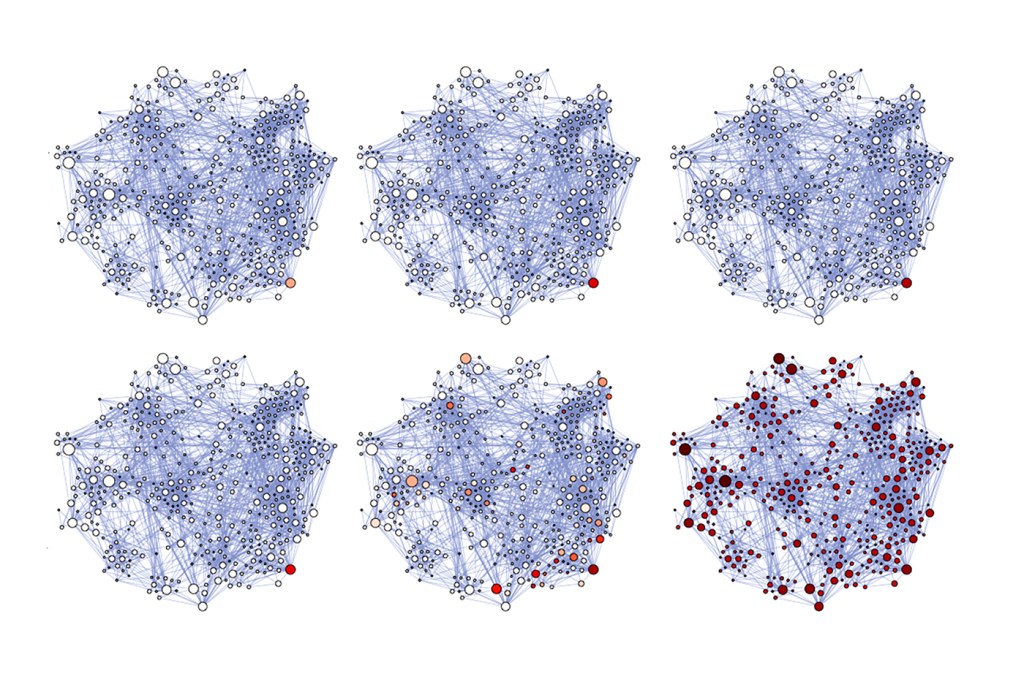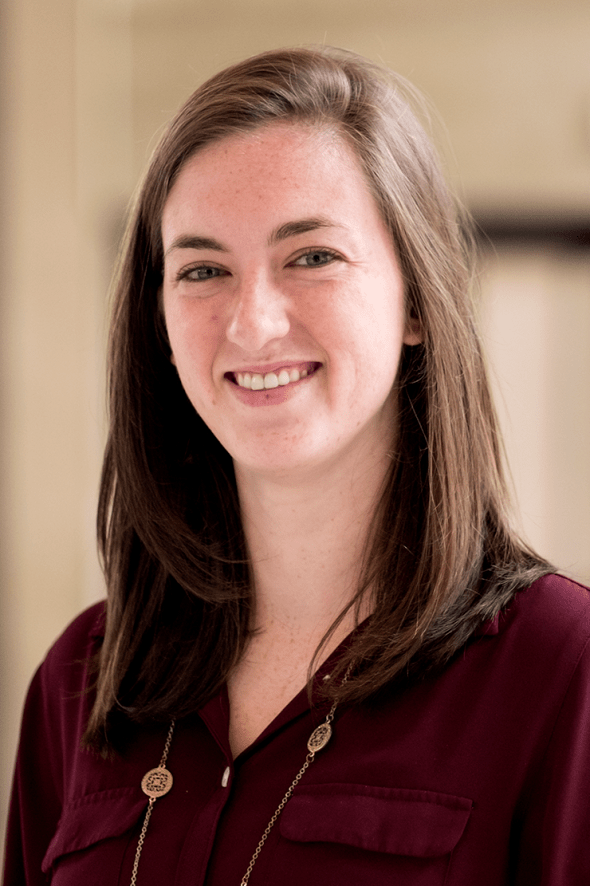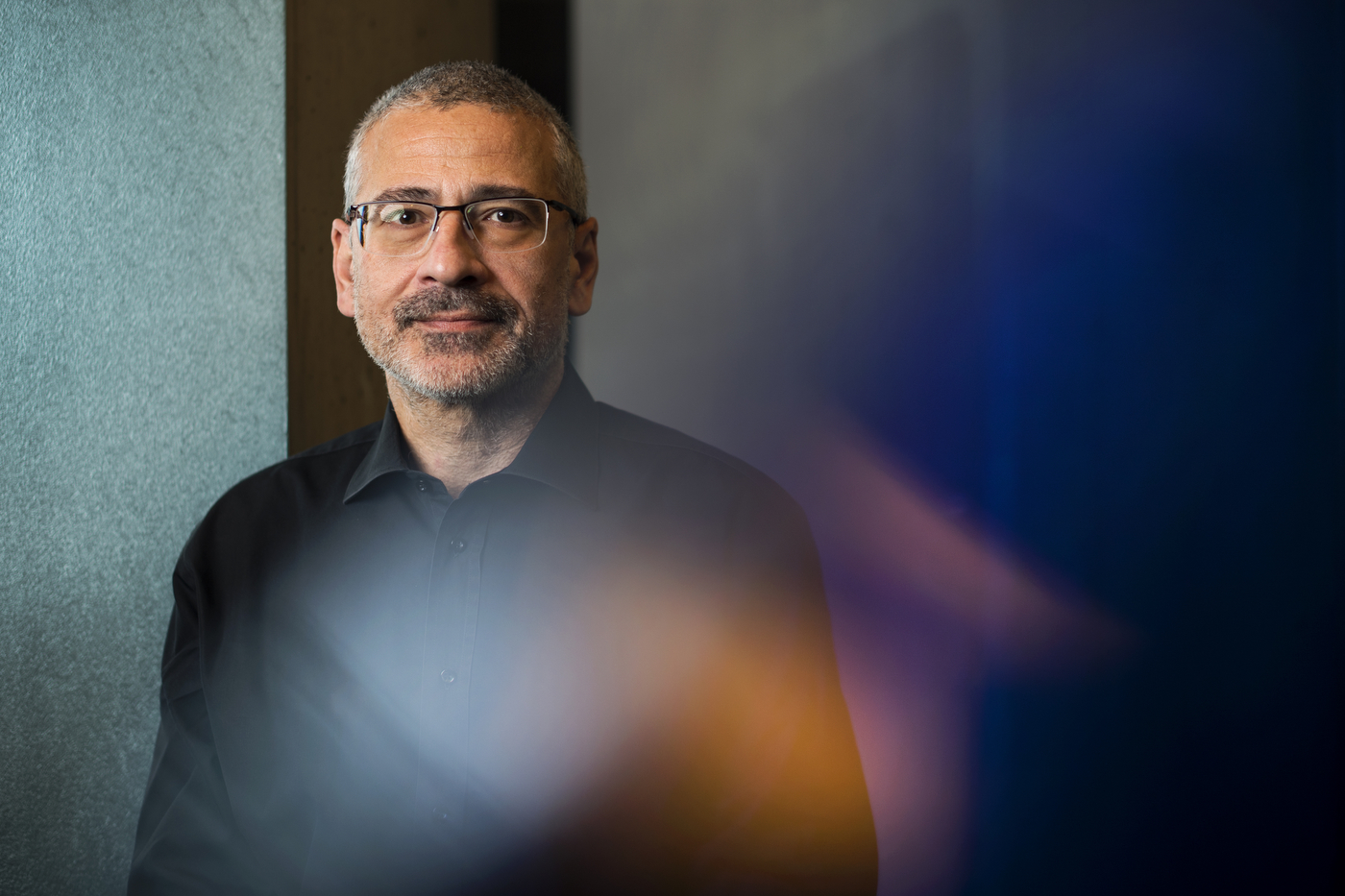How can we stop the spread of misinformation about COVID-19? Better math.

Think of all the false rumors that went viral about COVID-19—it got so bad, the World Health Organization called it an “infodemic.” Whether it is in hoaxes or a viral conspiracy theory, information travels fast these days. Just how fast and far information moves depends on who shares it, and where, from discussions on social media to conversations with fellow commuters on your way to work.

Jessica Davis, third-year doctoral student at Northeastern’s Network Science Institute. Photo courtesy Jessica Davis
So, how can our interactions and their infrastructures affect the spread of rumors and information? That’s a question that researchers are beginning to answer with complex math models of social contagion, the concept that social behavior and ideas spread like a pathogen.
“The thing with social contagion is that it is like the threading of some type of behavior, or an idea, or information,” says Jessica Davis, a third-year doctoral student at Northeastern’s Network Science Institute.
Davis recently led a study that uses mathematical equations to model the way rumors and information spread in different types of environments.
In a paper published Monday in Nature Physics, Davis’s team outlined a new way to incorporate into their calculations aspects of the way information is shared in the physical world—such as people’s commute to work and the online groups they interact with—that might influence how information spreads.
The model lays the groundwork for more realistic ways to study how information travels, Davis says.
“These models can be used to point out different structural, social, and other factors,” she says, “that aren’t normally taken into account when you’re thinking about how information spreads.”
Alessandro Vespignani, Sternberg Family Distinguished University Professor of physics, computer science, and health sciences, says the inclusion of such realistic features is essential to accurately model the way information spreads in real time. Vespignani, a co-author of the study, has also modeled the spread of the COVID-19 outbreak.
“The study opens the path to more realistic modeling of the diffusion of information and misinformation that takes into account the geographical and social structure of social networks,” he says.

Alessandro Vespignani, the Sternberg Family Distinguished University Professor of physics, computer science, and health sciences. Photo by Adam Glanzman/Northeastern University
The team’s approach to modeling the way information spreads among people is based on similar efforts by Vespignani and other scientists to model how infectious diseases spread, and takes advantage of data already available from epidemiological studies.
“We have a lot more data in the world now, and we can use it to understand how things are spreading,” Davis says. “We have people who are using transportation networks, people using Google, Twitter, and other social media, to get an understanding of how a disease is spreading.”
Davis and her team also used a classic rumor propagation model as the basis of their model. That approach, known as the Maki-Thompson model, factors in people who spread, ignore, and refrain from spreading the rumor. All of those individuals mirror the function of infected, susceptible, and recovering people in models of disease and infection.
In their study, the team tested how people’s ability to move and travel in Europe could influence the spread of a rumor. Other tests included models constrained to online databases to simulate the way information permeates different academic disciplines. The idea is to calculate the tipping point at which rumors and information go viral.
“We write down a set of equations, and we can solve for this threshold,” Davis says. “It’s a function of both the rumor model parameters, as well as the structure of this network.”
Those equations are what social contagion models need in order to be as insightful as they can be, Davis says.
And, in the long run, it’s what could set network scientists up to model the spread of information in the real world with more precision, including the roles that different groups of people play.
“Some types of information spreading in the teenage range might not affect the elderly population,” Davis says. “If we could understand who is being affected by that information, that could help us or help maybe social media sites monitor or get a better understanding of who’s been impacted by this information.”
For media inquiries, please contact Jessica Hair at j.hair@northeastern.edu or 617-373-5718.




